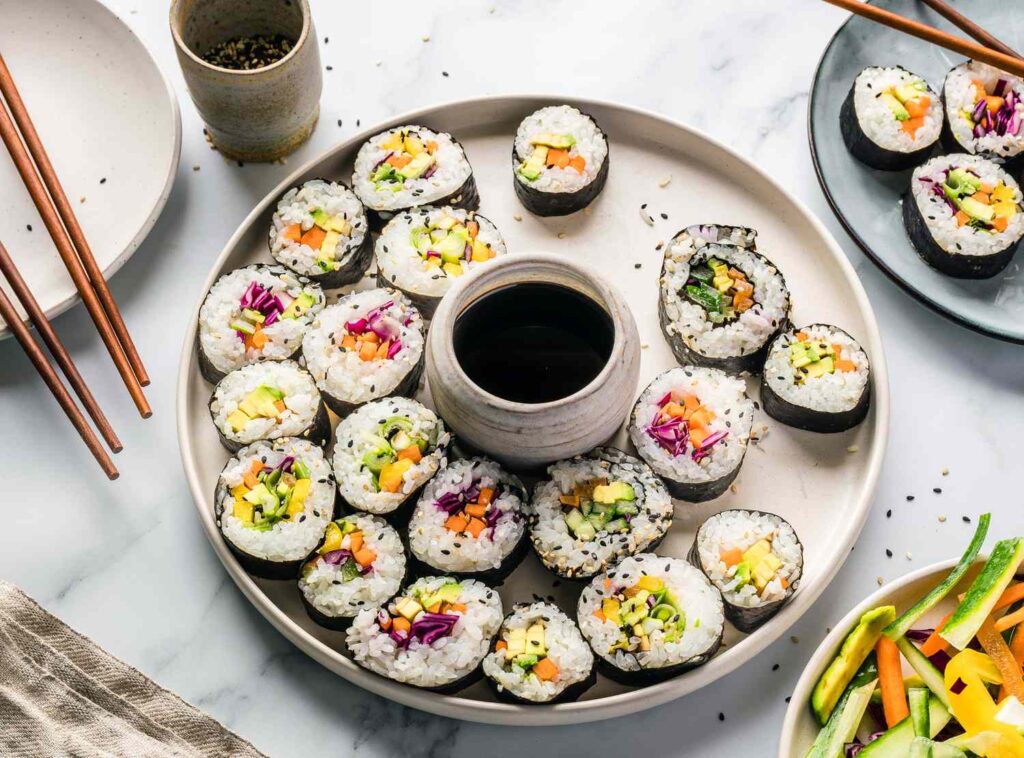There is Exploring the Culinary World by The Top 7 Rice Varieties and How to Cook Rice
Rice, a staple in diets across the globe, is a versatile and essential ingredient that comes in various shapes, sizes, and flavors. The world of rice is diverse, offering an array of choices to suit different cuisines and preferences.
In this article, we’ll delve into the top seven rice varieties that have earned a special place in kitchens worldwide, exploring their unique characteristics and providing insights into how to cook them to perfection.
1.Basmati Rice

Known as the “king of rice,” Basmati rice originates from the foothills of the Himalayas and is renowned for its distinctive long grains and aromatic fragrance. Basmati rice is a staple in Indian and Middle Eastern cuisines, adding a fragrant and fluffy texture to dishes. To cook Basmati rice, rinse it thoroughly to remove excess starch, then soak it for 30 minutes before cooking. For every cup of rice, use 1.5 cups of water, and simmer until the grains are tender and separate.
2.Jasmine Rice
Hailing from Thailand, jasmine rice is celebrated for its delicate aroma and slightly sticky texture. It is a popular choice for Asian dishes, particularly Thai and Vietnamese cuisines. To cook jasmine rice, rinse it until the water runs clear, then use a 1:1 ratio of rice to water. Bring to a boil, reduce heat, cover, and simmer until the water is absorbed. Let it sit for a few minutes before fluffing with a fork.
3.Arborio Rice

Arborio rice is a short-grain rice that is the star of Italian dishes, especially risotto. Its high starch content lends a creamy texture to dishes, making it a favorite among chefs. To cook Arborio rice, sauté it in olive oil or butter until translucent, then gradually add warm broth, stirring until absorbed. Repeat until the rice is tender yet slightly firm. The slow and steady process is essential for achieving the perfect risotto consistency.
4.Brown Rice
Considered a healthier alternative to white rice, brown rice retains the bran and germ layers, providing more fiber, vitamins, and minerals. It has a nuttier flavor and a chewier texture. To cook brown rice, rinse it and use a 2:1 ratio of water to rice. Simmer for about 45-50 minutes until tender. Let it rest for a few minutes before fluffing to allow any remaining moisture to be absorbed.
5.Sushi Rice

Sushi rice, or shari, is a short-grain rice variety that is the foundation of Japanese sushi. It is seasoned with a mixture of rice vinegar, sugar, and salt to give it a glossy appearance and a slightly sweet and tangy flavor. To prepare sushi rice, rinse it until the water is clear, then cook with a 1:1 ratio of rice to water. After cooking, gently fold in the seasoned vinegar mixture while the rice is still warm, being careful not to mash the grains.
6.Wild Rice
Despite its name, wild rice is not technically rice but the seed of aquatic grasses. Native to North America, it has a nutty flavor and chewy texture, making it a nutritious addition to various dishes. To cook wild rice, rinse it thoroughly and use a 3:1 ratio of water to rice. Simmer for 45-60 minutes until the grains burst open and are tender. The water absorption may vary, so it’s essential to monitor the cooking process closely.
7.Long Grain White Rice

Long-grain white rice, a pantry staple in many households, is a versatile option suitable for various cuisines. With slender grains that remain separate when cooked, it provides a light and fluffy texture. To cook long-grain white rice, rinse it to remove excess starch, then use a 2:1 ratio of water to rice. Bring to a boil, then reduce heat, cover, and simmer until the water is absorbed.
Things You Should Know
As we traverse the rich landscape of rice varieties, it becomes evident that each type brings its own unique qualities to the table. From the fragrant Basmati to the creamy Arborio and the chewy wild rice, these varieties offer a plethora of options for culinary exploration.
Understanding the distinct characteristics of each rice type and mastering the art of cooking them will elevate your dishes to new heights, allowing you to savor the diverse flavors and textures that rice has to offer. So, whether you’re preparing a comforting bowl of risotto, a fragrant pot of jasmine rice, or a health-conscious plate of brown rice, the world of rice awaits your culinary creativity.




Great beat ! I would like to apprentice even as you amend your site, how could i subscribe for a blog web site? The account helped me a appropriate deal. I had been tiny bit familiar of this your broadcast offered vivid transparent concept
Its good as your other blog posts : D, appreciate it for putting up. “Too much sensibility creates unhappiness too much insensibility leads to crime.” by Charles Maurice de Talleyrand.